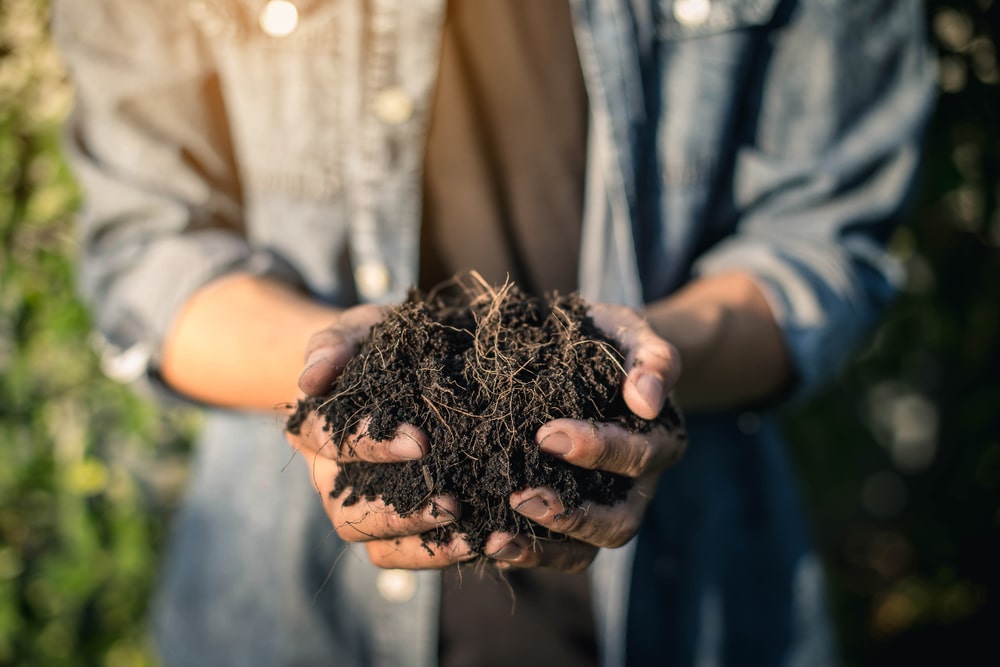Composting is beneficial for many reasons. It reduces waste in landfills and improves soil quality by providing food for earthworms and beneficial microbes that break it down into nutrients. Part of being an organic gardener is learning to compost. Can you just toss leaves, weeds, and kitchen scraps together? Well, yes — and no. To make a well-balanced compost requires several things.
FOOD
Compost piles need two kinds of food — greens and browns. Greens can be fresh plant materials such as weeds, kitchen scraps (no meat), green leaves, coffee grounds, fresh manure, etc. Browns are dried materials such as leaves, straw, and sawdust. Greens provide nitrogen and browns provide carbon — both essential in creating balanced compost.
AIR
The microbial action that turns organic matter into compost requires good air circulation. Without air, materials rot, they don’t compost. To make sure your compost pile has plenty of air, be sure to mix both green and brown ingredients together. From time to time, break your compost pile apart with a pitchfork or spade and pile it back together in a looser heap. When you start your compost pile, start with several inches of twigs on the bottom to aid in aeration.
WATER
Proper moisture is essential for microbial action to take place. A compost pile should be damp, but not soggy. Lightly moisten dry ingredients when you add them. During long stretches of damp weather, you might want to cover your pile with a tarp to keep out excess moisture. During dry weather, you’ll want to water the pile lightly.
SIZE
The minimum size for a successful compost pile is about three square feet. Smaller than that and the pile cannot insulate itself well enough to keep the microbial action going. A smaller pile will still break down but can take three times as long to form useable compost.
COMPOSTING TIPS
Do not compost:
- Chemically treated wood or sawdust.
- Diseased plant clippings. A successful compost pile will usually generate enough heat to kill most plant diseases, but not always.
- Human, cat, or dog wastes. These can all carry diseases.
- Meat, bones, or discards from chicken (like skin). These can attract undesirable pests.
- Seed heads from noxious weeds.
If you’re a totally organic gardener, don’t add peels from conventionally grown fruits or veggies because of pesticide residues.
You can add:
- “Green” kitchen scraps—including eggshells and coffee grounds.
- Packaged bone meal, Green Sand (marine minerals), or seaweed extracts.
- Composted cow manure
- Dried leaves (best chopped fine first with your lawn-mower).
- Newspapers (except for glossy inserts or colored ink—they contain chemicals.
- Compost Bi-Accelerators—these are additional beneficial microbes.
- Pine needles—sparingly.
Be sure to have the pH of your compost checked before using it to see if it needs adjusting. You want a neutral pH of around 7.


I had an absolutely lovely, very workable, 3-bin compost pile back in NY, but here in VA, it’s pretty impossible. Between the rats, skunk, possums, raccoons, & bears, it’s just not worth it.
Bonnie–we do have an active wildlife population, don’t we? I’ve never rats, skunks or bears bother mine–not here in Bon Air, thank goodness! And the deer leave it alone. The possums and raccoons seem more interested in the food I leave out for the stray kitty who shows up every couple of days looking for a treat. Because critters are mostly attracted to meat, fish, bones, dairy products, grease, or oil, just don’t put those in your compost. And you may want to try an actual “bin” that they can’t get into.
Bonnie
There is no “bin” that’s going to keep our Black bears out. We’ve had to make a Fort Knox out of our trash cans, & that’s as far as I’m willing to go – lol!